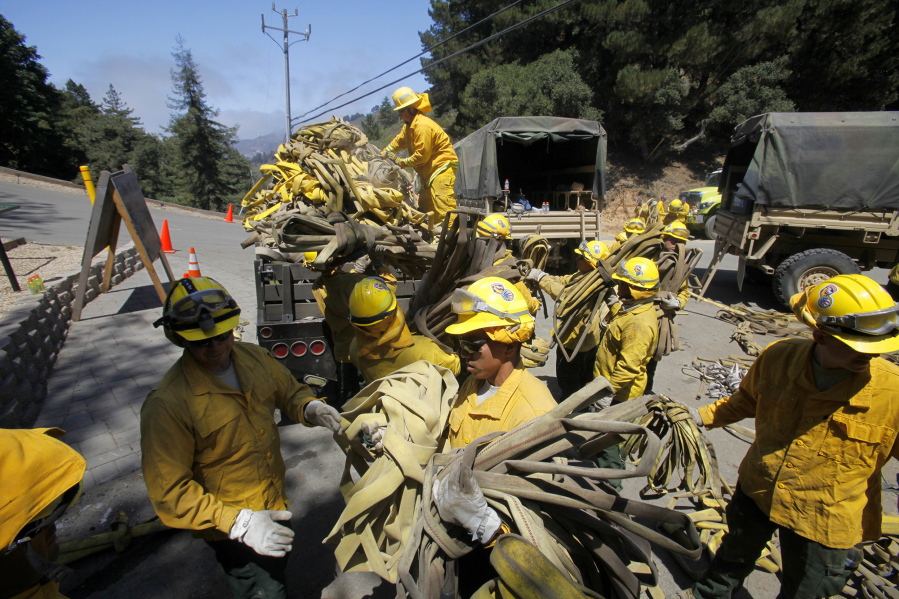LOS ANGELES — When a wildfire burned across Big Sur two years ago and threatened hundreds of homes scattered on the scenic hills, thousands of firefighters responded with overwhelming force, attacking flames from the air and ground.
In the first week, the blaze destroyed 57 homes and killed a bulldozer operator, then moved into remote wilderness in the Los Padres National Forest. Yet for nearly three more months the attack barely let up.
The Soberanes Fire burned its way into the record books, costing $262 million as the most expensive wildland firefight in U.S. history in what a new report calls an “extreme example of excessive, unaccountable, budget-busting suppression spending.”
The report by Firefighters United for Safety, Ethics, and Ecology criticizes fire managers for not adapting their approach to the changing nature of the blaze. The nonprofit group, which gets funding from the Leonard DiCaprio Foundation and other environmental organizations, advocates ending “warfare on wildfires” by ecologically managing them.
‘Use it or lose it’
The report suggests the Forest Service response was the result of a “use it or lose it” attitude to spend its entire budget, which had been boosted by $700 million because of a destructive 2015 fire season. The agency managed to spend nearly all its 2016 money in a less-active fire season on about half the amount of land that burned the year before.
“They just kept going crazy on it,” report author Timothy Ingalsbee said. “It wasn’t demand-driven. It was supply-driven. They had all this extra money Congress had given them, and they had to justify that.”
Forest Service officials would not comment directly on the report. After asking The Associated Press to provide written questions, the agency declined to answer them and issued a short statement saying it was committed to reducing costs in similarly large fires.
“Protection of people first and then resources are our primary considerations,” the statement said. “Every fire is evaluated to determine the appropriate strategy. We continually look for opportunities to improve outcomes and accountability and to find more cost-efficient and effective methods of managing wildfires.”
In addition to burning 206 square miles, the smoky fire closed signature parks in the area and put a damper on tourism in Big Sur during the peak season of its only industry. Monterey County estimated a 40 percent loss in revenue for the summer season in the area.
An internal Forest Service review produced last year and obtained by the AP reached some of the same conclusions as Ingalsbee.
For example, the department’s review found that from Aug. 9 to Sept. 29, 2016, the number of threatened structures remained at 400 even as the fire grew by more than 90 square miles, which indicated the risk to property had abated as the flames burned into the wilderness. During that period, firefighting costs grew by $140 million.
The review found forest managers didn’t think they could deviate from the “overwhelming force concept” aimed at suppression.



